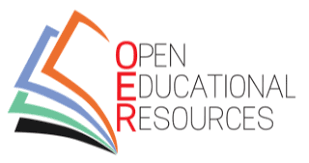Open Educational Resources (OER)

Open Educational Resources, referred to as OER, are educational materials that are shared at no cost with legal permissions for the public to freely use, share, and build upon the content.
Instructors have access to various resources, such as OER Textbooks, Journal articles from the library, model syllabi and even, in some cases, activities focusing on the learning outcomes. Instead of an expensive textbook driving the curriculum, faculty focus on the learning outcomes and provide digital educational resources with no cost to the students. A change recently also allows a very low cost alternative for students with textbooks (rental or purchase) costing less than $30.
OER is important, first of all, because it provides affordable material to students. There is also a benefit for faculty since OER allows faculty to enhance their own work, and provides faculty with content for classes.
“Open education is an idea, a set of content, practices, policy, and community which, properly leveraged, can help everyone in the world access free, effective, open learning materials for the marginal cost of zero. We live in an age of information abundance where everyone, for the first time in human history, can potentially attain all the education they desire.”
The key to this transformational shift in learning is Open Educational Resources (OER). Teachers have more freedom to design learning experiences by creating or finding a wide variety of high-quality, standards-aligned OER to support and supplement their teaching. Students can use OER to supplement their studies, as well as create OER while learning.
OERs are possible because:
- education resources are (mostly) born digital and digital resources can be stored, copied, and distributed for near zero cost;
- the internet makes it simple for the public to share digital content; and
- Creative Commons licenses make it simple and legal to retain copyright and legally share education resources with the world.
Because we can share effective education materials with the world for near zero cost, many people argue that educators and governments who support public education have a moral and ethical obligation to do so. After all, education is fundamentally about sharing knowledge and ideas. Creative Commons believes OER will replace much of the expensive, proprietary content used in academic courses. Shifting to this model will generate more equitable economic opportunities and social benefits globally without sacrificing quality of education content.
Open Access (OA) resources are very important to many groups, especially faculty and students. For faculty, it gives their research a worldwide audience with increased visibility. For students, it gives them access to resources they need for their courses, without money being a barrier; it certainly levels the playing field between well-off students and students struggling financially. It also assists less wealthy schools and institutions. Open Access resources also allow instructors to bring current research into the classroom. OA helps libraries and universities since there is the problem of rising costs of journal subscriptions. Another important consideration is the open access provides taxpayers with free access to the results of research they helped fund.


